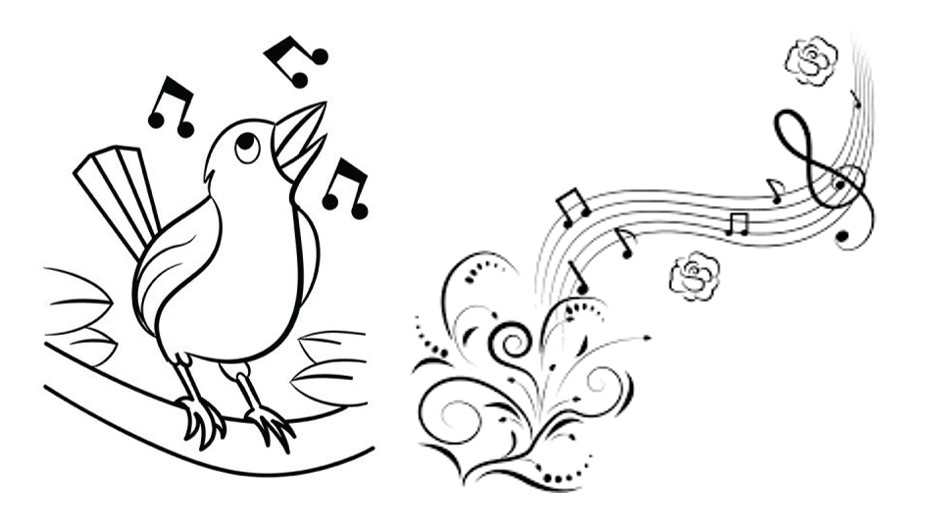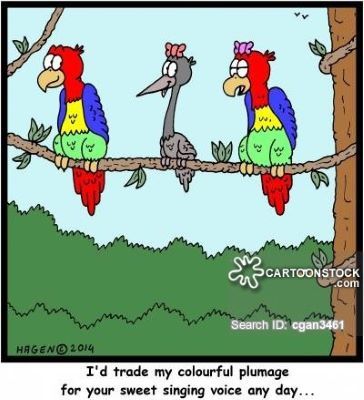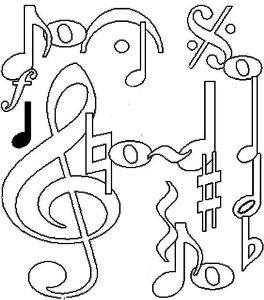
There is something about singing
that just makes me feel good …

MUSIC RIDDLES
How do you make a band stand?
What do little penguins sing when their father brings fish home for dinner?
What do you call a cow that plays a musical instrument?
What do you get if you cross a grizzly bear and a harp?
What do you get if you cross a serpent and a trumpet?
What do you get if you cross a sweet potato and a jazz musician?
What is a cat’s favorite song?
What makes music on your hair?
What rock group has four guys who don’t sing?
What type of music are balloons scared of?
What type of songs do the planets sing?
What was stolen from the music store?
What was the result when a piano fell down a mine shaft?
What’s green and sings?
What’s the difference between a piano and a fish?
What’s the most musical bone?
What’s the most musical part of a fish?
What’s the most musical part of a turkey?
Where did the music teacher leave her keys?
Why are pirates great singers?
Why did the singer climb a ladder?
Why do fluorescent lights hum?
Why do hummingbirds hum?
Why is a piano so hard to open?
Why is slippery ice like music?
Why was the musician arrested?
Knock knock!
Who’s there?
Little old lady?
Little old lady who?
ANSWERS |





Crack the Music Code. Teachers Pay Teachers.



HOW TO LISTEN TO A SONG
Rhythm – Get used to a bird’s characteristic tempo … fast or leisurely.
Pitch – Most birds sing in a characteristic range, with smaller birds typically having higher voices and larger birds usually having deeper voices. Many bird songs also change pitch.
Repetition – Some birds characteristically repeat syllables or phrases before moving on to a new sound.
Tone – The tone of a bird’s song can be very distinctive. Pay attention to whether a bird’s voice is a clear whistle, harsh or scratchy, liquid and flute-like, or a clear trill.
Rainsticks are ceremonial musical instruments used to invoke the rain spirits. They are made by people who live in the deserts of northern Chile. In Chile, rainsticks are traditionally made from dead cactus tubes with hundreds of cactus spines hammered into the tube. Tiny lava pebbles cascade gently through the tube, sounding much like rain.
A paper towel tube or other long cardboard tube
Aluminum foil
Small dried beans (like lentils), unpopped popcorn, dry rice, or tiny pasta.
Brown paper (from a grocery bag) or construction paper
Glue
Scissors
Crayons or markers
Crunch the aluminum foil into two long, thin, snake-like shapes. Then twist each one into a spring shape. Put the aluminum foil springs into your tube. Pour some dry beans, dry rice, or unpopped popcorn into your tube. The tube should only be about 1/10 full. You can experiment to see how different amounts and different types of seeds and beans change the sound.

THE WISE SONGBIRD
Once upon a time there was a golden songbird that lived in a beautiful garden. It spent all its days singing the loveliest songs to the honour of its maker and the delight of all the people who heard it. But the keeper of the garden, who was a foolish and greedy man, coveted the little songster, and one day he made a cunning net in which he snared it. The little bird begged the man to release him and promised to tell him three great secrets if only he would let him go. Now the gardener really was a very greedy man and rubbing his hands together, he eagerly released the bird.
Then the songbird told him it’s three great secrets: Never believe all that you hear; Never regret what you have never lost, and never throw away that which you have in your keeping.
The gardener was furious when he heard this and said he had known these so-called’ secrets’ since he was a little child and shouted that the bird had tricked him. But the songbird quietly replied that if the man had really known these three secrets, or only the last of them, he would never have let him go.
Then the bird added: “I have a most precious jewel weighing over three ounces hidden inside me and whoever possesses that marvelous stone will have every wish granted.”
On hearing this, the keeper roared like a lion and cursed himself for setting the songster free. But the little bird only added fuel to his rage by explaining that since he weighed no more than half an ounce at most, as anyone with eyes could plainly see, how was it possible that a gem weighing more than three ounces could be hidden within it’s tiny body?
At that the man tore his hair and lunged at the bird in a towering rage, but the little songbird flew to a nearby branch and added sweetly: “Since you never had the jewel in your hands you are already regretting what you never lost, and believing what I told you, you threw it away by setting me free.”
Then the little songbird told the man to study well these three great secrets and so become as wise as the bird himself
